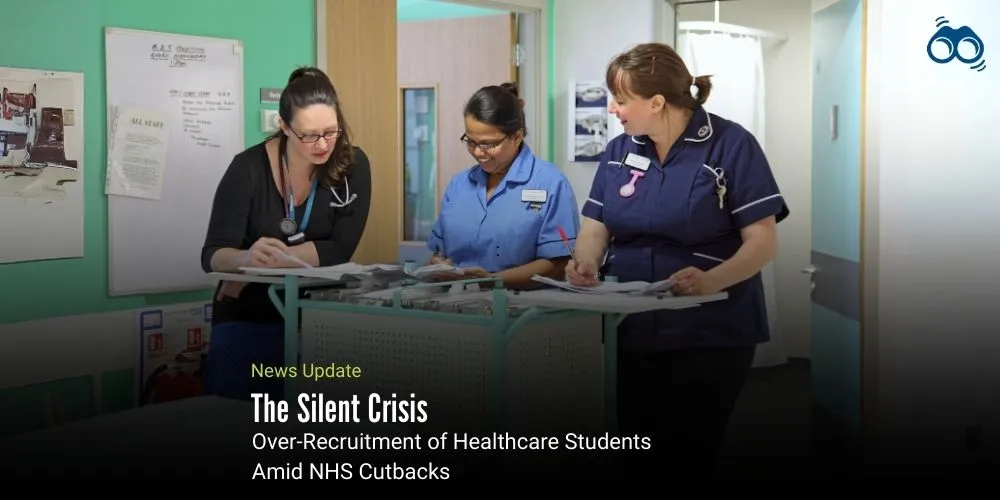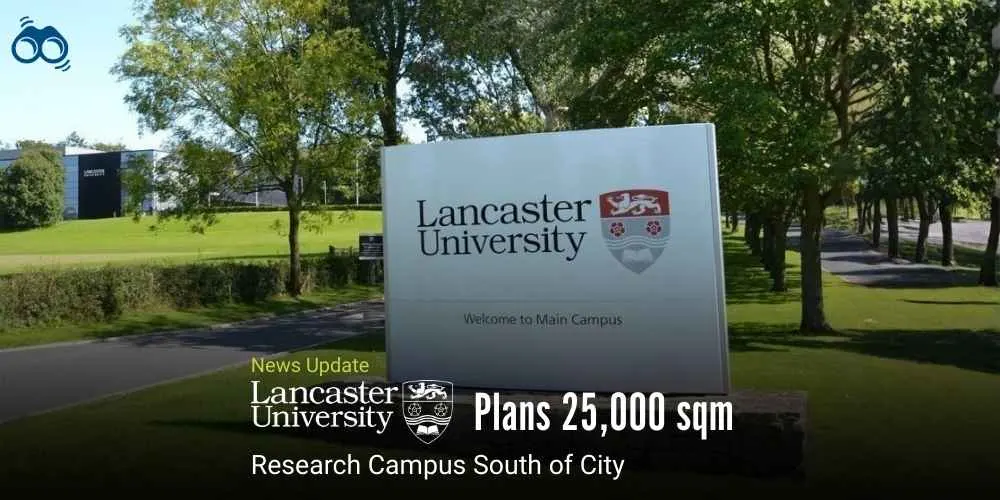Calls Grow for Better Coordination Between Universities and NHS in Workforce Planning
Universities Expand Healthcare Intakes Despite NHS Cuts, Sparking Fears of Oversupply
Healthcare is a cornerstone of any well-functioning society, and its success depends on a well-trained and adequately staffed workforce. Recognising this, the UK government pledged in 2019 to recruit 50,000 additional nurses in England by 2024–25. This goal was further reinforced through NHS England’s Long Term Workforce Plan, published in 2023, which aimed to tackle critical staffing shortages through a strategic focus on training, retention, and reform. Measures included expanding domestic education places, increasing apprenticeship pathways, and improving working conditions to retain existing staff.
In response, higher education institutions quickly scaled up undergraduate healthcare intakes to support the national recruitment effort. Universities played a key role in expanding training capacity, helping to meet the projected workforce demands. However, less than two years after the release of the workforce strategy, the landscape has changed significantly. NHS vacancies have reportedly declined, and NHS trusts across England are now facing financial constraints. These pressures have prompted discussions about reducing clinical staff, the very professionals who were recently prioritised for recruitment.
Although the Labour government allocated relatively favourable funding to the NHS in the latest spending review, the focus is now said to have shifted toward improving productivity rather than expanding the workforce. No new posts are planned specifically to address waiting list reductions. One clear signal of this change is the anticipated announcement by the Chief Nursing Officer of a 30% cut in corporate nursing roles,non-patient-facing positions focused on governance, education, and policy. In the Midlands, workforce plans reportedly predict a 3.6% reduction in staffing for 2025–26, amounting to about 10,000 full-time roles.
Despite these shifts, universities have continued to expand enrolments into healthcare professional (HCP) programmes. The Royal College of Nursing reported a 35% decline in nursing applications for 2025, yet many institutions remain committed to increasing student intake, often without adequate consultation with NHS partners. This disconnect between educational ambition and NHS service capacity is contributing to what some have described as a growing but largely unspoken crisis.
NHS stakeholders acknowledge the long-term value of investing in the future workforce, especially given that undergraduate healthcare degrees span several years and workforce needs can change over time. However, they argue that the current pace of recruitment is unsustainable in the short to medium term and increasingly misaligned with the NHS’s ability to offer clinical placements and guarantee graduate employment.
Each NHS facility is subject to an “educational audit” that assesses its ability to support students, including the number of trained practice assessors. When universities enrol beyond these audited limits, the quality of supervision and hands-on training reportedly suffers. If poor experiences are reported through the National Education and Training Survey (NETS), it can trigger a review by NHS England and damage institutional relationships. As a result, many NHS trusts have become reluctant to accommodate more students than they are equipped to handle. However, universities are reportedly not adjusting enrolments to reflect this.
Observers have drawn parallels to the early 1990s, when a similar oversupply of nurses, trained through publicly funded programmes, took more than five years to correct. There are growing concerns that the current approach could lead to a repeat of this boom-and-bust cycle, with healthcare education shifting from a public good to a transactional commodity. While tuition fees have empowered students to demand more from their education, there has been limited public discussion about the consequences of oversupply.
Concerns have also been raised about students’ expectations. Many begin their training believing they are entering a secure, high-demand profession. However, a recent survey by the Royal College of Midwives found that 80% of student midwives were not confident about securing employment after graduation. Despite committing to several years of demanding, costly study—often involving unpaid clinical placements such as the 2,300 hours required of nursing students—many are now facing uncertain career prospects.
While medical training remains closely regulated, universities retain considerable autonomy in admissions to other healthcare courses. However, experts argue that this independence should not lead to a disconnect between student intake and actual workforce demand. Admissions decisions must reflect not only policy ambitions but also the realities of NHS placement capacity and job availability. A stronger, more transparent partnership between universities and the NHS is urgently needed. The aim is not to enforce rigid recruitment caps but to promote better coordination between educational institutions and service providers. Working in silos, they warn, will ultimately harm students, educators, healthcare employers, and patients alike. To secure the long-term sustainability of the healthcare workforce, all stakeholders must commit to honest dialogue, joint planning, and shared responsibility.
Editor’s Note:
The future of healthcare depends on a well-prepared and stable workforce. The UK government’s earlier plan to recruit more nurses and train more healthcare professionals was a strong step in the right direction. Universities quickly increased student numbers to help meet this goal. But less than two years later, the situation has changed in important ways. The NHS is now facing budget pressures, not staff shortages. At the same time, universities are still expanding healthcare student intake, often without close coordination with NHS trusts. This mismatch between education and real-world demand risks putting unnecessary pressure on both students and the healthcare system. Students embark on their educational journeys with aspirations and dedication, frequently making significant personal and financial concessions. They are entitled to unambiguous direction and pragmatic outlooks concerning their future professions. While increasing the number of healthcare professionals is crucial, it is only beneficial if adequate placements are available during their training and employment opportunities exist post-graduation. The current imperative is candid dialogue and enhanced collaboration between universities and the NHS. Through collective effort, we can guarantee that healthcare education remains pertinent, viable, and congruent with the nation's requirements.
Skoobuzz believes that putting students first,while planning carefully for the future is the only way to build a stronger, more reliable health system for all.














0 Comments (Please Login To Continue)